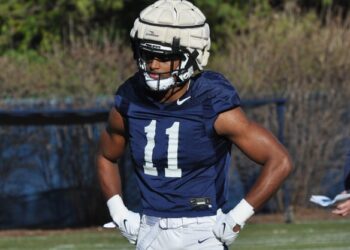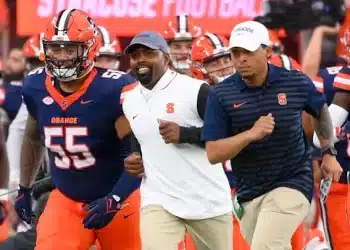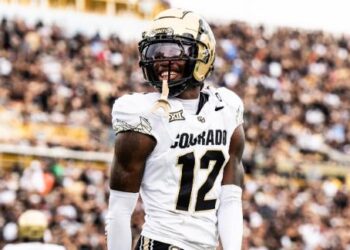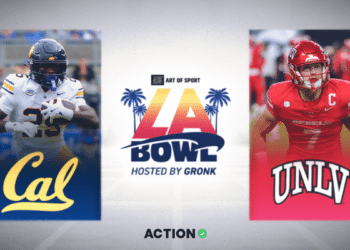By: Bill Carroll
Edward Solomon Wellings “Sol” Butler was born in Kingfisher, Oklahoma, in 1895 and when he was in his early teens, his family moved to Hutchinson, Kansas. It was while there, as a 7th grader, he first played football, when he was 13. Once at Rock Island High School, Butler excelled in track, winning six firsts, setting five meet records, and unofficially breaking the world record in the 50-yard dash at the 1913 district meet, leading Hutchinson High to the state championship. In 1914, he broke the National Interscholastic record for the 60-yard dash.
Sol Butler was quite popular in Hutchinson. He made the varsity football team, as a starting halfback, during his freshman year and led the school in football and track and field, during his sophomore year, he helped Hutchinson finish as the runner-up at the state meet, after setting state records in the 100-yard dash. Local fundraisers paid his entry and travel costs to compete in Chicago, some even wrote poems about him and mourned deeply when he left, before his senior year. In a surprise move he, and his older brother Benjamin, followed their football coach, H.N. Roe, to Rock Island, IL, in 1915 finishing his senior year.
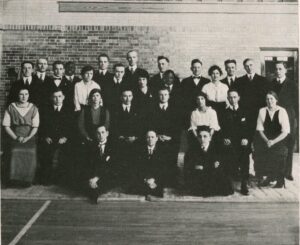
Sol Butler attended Rock Island IL, for just his senior year, but in that time set more records. In Chicago, competing versus 300 of the best track stars of the Midwest, in the regional interscholastic meet held at Northwestern University, he went on to place in the 60-yard dash and hurdles, the 440-yard dash, and the broad jump. He broke one meet record, tied a world record, and won fourth place overall, competing against entire track teams.
Life was very hard for Black Americans in the early 20th century, Butler’s winning despite all of that was amazing. After high school, he got a scholarship to Dubuque College, a Presbyterian-affiliated school in Iowa. He won 12 letters in four sports. At Hutchinson, Sol Butler at least had “Duck” Philips as a fellow black player. In Dubuque, however, Butler was the only black on the squad. several school and world records.
Sol Butler sprinted and jumped for Dubuque College and the Lincoln Athletic Club, earning 12 varsity letters at Dubuque in football, basketball, baseball, and track between 1915-19. Per Arthur Ashe’s book ‘Hard Road to Glory’, Butler was the first Black to quarterback a college football team for 4 years. {excluding #HBCU teams}.
“They say he was the son of a slave,” wrote Bert McGrane, for the Des Moines Register on March 30, 1958. “He was broad-cheeked, big-shouldered, lean-legged. He was built very much like the great Babe Ruth.” In 1919, at the Penn Relays, one of the country’s oldest track and field competitions, he won both the 100-yard dash and long jump.
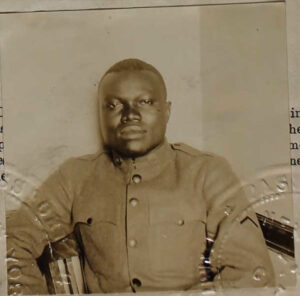
He served during WWI and represented the U.S. Army during the July 1919 Inter-Allied games in France, where he won a gold medal in long jump. He set the U.S. long jump record at 24 feet, 8 inches.“ From there he took first in the broad jump with a record leap of 24′ 10″ at the Inter-Allied Games in Paris while also placing in the 100-meter dash.
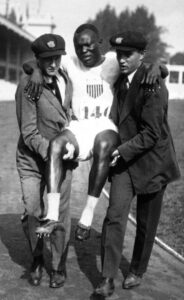
With the Olympic Games returning in 1920,he was considered the favorite in the broad jump after an Olympic Trials record jump of 24′ 8″. Butler was among the three Blacks to qualify for the US Team in 920. But then, he pulled a tendon and had to be carried from the field.
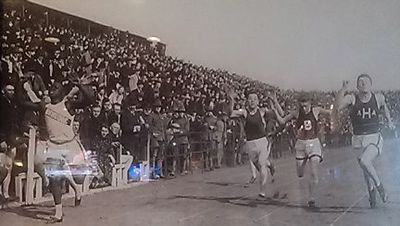
Considered a medal favorite, he placed 7th in the competition. “Truly one of the best athletes in the world while he was in high school,” said Chairman of National High School Track& Field Hall of Fame, Josh Rowe. “His long jump was particularly special jumping over 24 feet. At the time among the very best in the world.
Those jumps today would still be among the top five or ten in any given year, now 100 years later. So his performances 100 years ago would still be incredible in today’s world…some other people in the inaugural class include Jesse Owens, Steve Prefontaine, Jim Ryan, so the company is pretty special that Sol Butler’s included with.” Register’s Iowa Sports Hall of Fame. Video of him jumping in the 1919 Inter-Allied Games is here-criticalpast.com/video/65675051 (He’s the second jumper)
Sol Butler played in the NFL’s infancy with several teams: Hammond Pros, Akron Pros, Canton Bulldogs, Buffalo Bisons, and Rock Island Independents. Butler and Pollard, two groundbreaking quarterbacks met on the playing field in 10/10/1926, when Canton went head-to-head with Akron. An NFL rematch of Black quarterbacks did not reoccur for another 60 years. The 5’8″ 163 Sol Butler of high school exploits was a 5’8″ 185, Sol Butler as a professional who was like Tyreek Hill with regard to how much faster he was than everyone else.
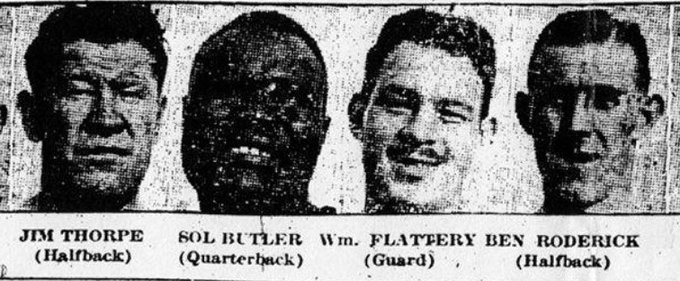
The photo above from the Canton Repository on Oct. 10, 1926, page 38. The caption tells the story. Butler had been moved from running back to quarterback late in September. Canton added Jim Thorpe to the backfield as well, as the photo makes clear. The significance of the game was noted by the local press at least. The Akron Beacon-Journal (Oct. 9, 1926) noted “two of the greatest Negro athletes who ever donned cleated shoes” would clash that day, with the interest being whether “the Negro from the East (Pollard) or the Negro from the West (Butler), stands out as the shining light.”
The Canton Repository played up that angle as well. The game was a battle on the line with few pass attempts being made (only 2 completions, both by Butler). Missed field goals and a grand defensive battle resulted in a 0-0 tie. It was the beginning of the end for that generation of Black quarterbacks. The next day, Pollard was dropped as QB by Akron (management claimed a “more aggressive” game plan was needed). The 1st Black NFL quarterback was no more. Solomon Butler,“the Dubuque speedster,” remained. He could out-run tacklers but not the erection of “the color line” that was clearly coming.
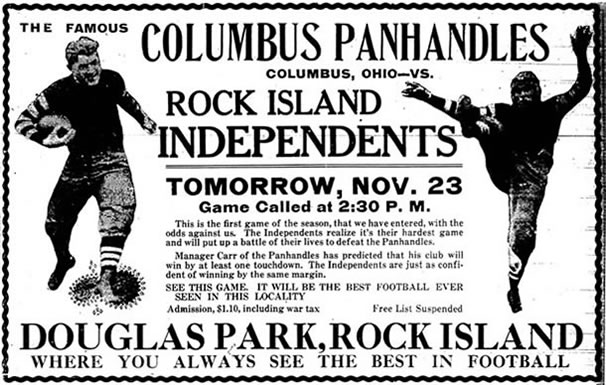
He settled in Chicago, Butler also played baseball as a pitcher and shortstop. In 1925 at the age of 30, he pitched professionally for the Kansas City Monarchs of the Negro League. Basketball also opened up new doors for Butler as he made his way to California with the Chicago All-Stars. While in Hollywood, he re-opened Jack’s Cafe (previously owned by Heavyweight Boxing Champion Jack Johnson) and appeared in numerous films, while befriending Oscar Devereaux Micheaux.
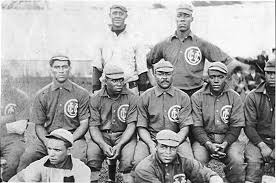
Sol Butler worked as a probation officer and was the sports editor for the Chicago Bee and The Defender newspapers. Butler also had minor parts in several movies. Sol Butler moved back to the Midwest and went on to work with the youth in the Negro districts as recreation director of Chicago’s Washington Park.
In his later years after prohibition, he owned nightclubs in Chicago and set up his own talent agency. He and his brother Ben, sold cars, self-published a book on track and field, shined shoes, and a various attempts at entrepreneurship. For a brief period was in the record business representing Paul Robeson, an American singer, and actor who was a political activist in the Civil Rights Movement.
December 1, 1954, Butler was working at Paddy’s Liquors, one of his Chicago taverns, when he ejected a man named Jimmie Hill, who had been harassing a pair of women in the tavern. Hill returned to the tavern and shot Butler in the hip and chest. Butler died of his injuries at Chicago’s Provident hospital. He’s buried next to his sister, Josephine Butler, at Maple Grove Cemetery in Wichita, Kansas.
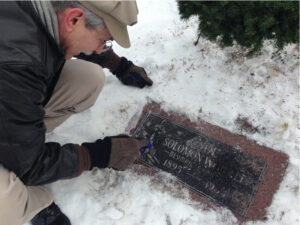
He is also a member of the Des Moines Register’s Iowa Sports Hall of Fame, and the Dubuque University Athletics Hall of Fame, he was knighted by the King of Montenegro, who made Butler a Knight of the Third Order of Danilo, he is also in the National High School Track & Field Hall of Fame. Sol Butler deserves
Works cited: data.desmoinesregister.com/hall-of-fame/s, en.wikipedia.org/wiki/Sol_Butler, kansas.com/news/local/new, nationalhighschooltrackandfieldhof.org/showcase/sol-b, “Sol”Butler: youtube.com/watch?v=QVEDUc, : hutchnews.com/article/201601, dbq.edu/athletics/athl, Crimmins, Roger. “Sol Butler Nearly Brought Fame of Olympic Medal to Dubuque,” Telegraph Herald, Aug. 5, 1984, p. 14 Online: news.google.com/newspapers?id=


 NFL
NFL
